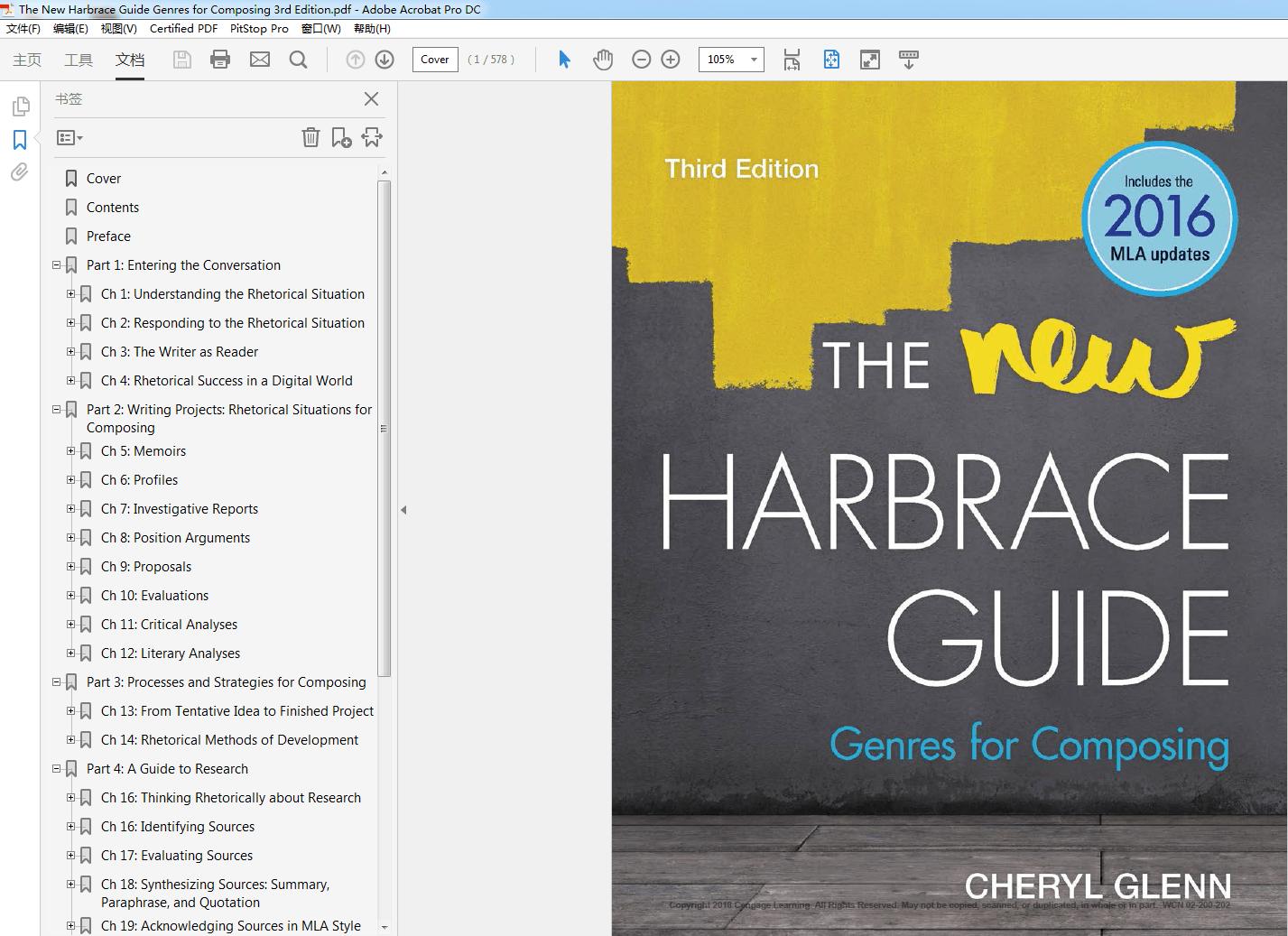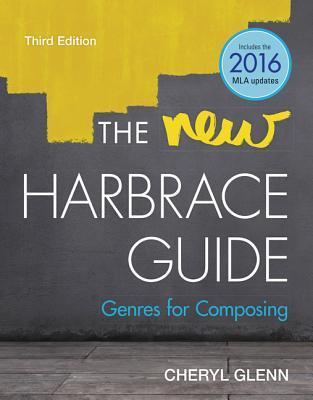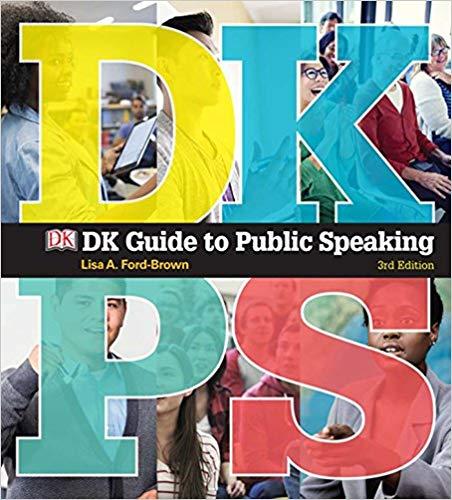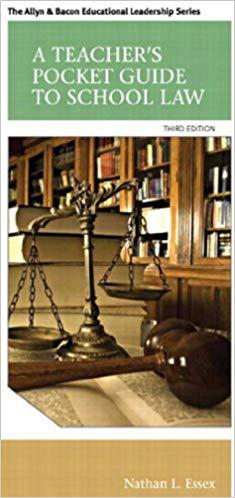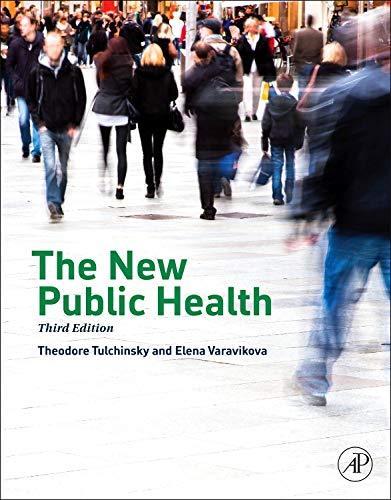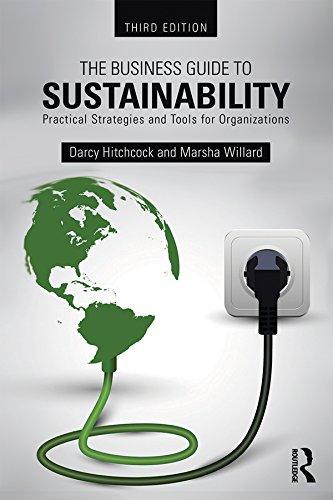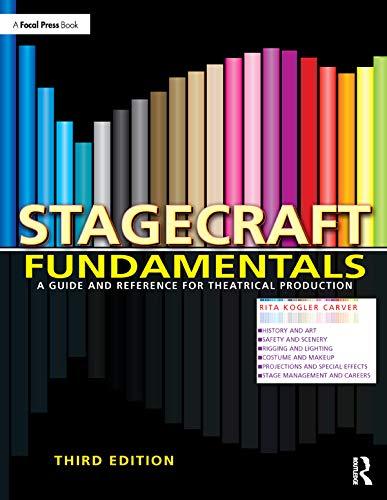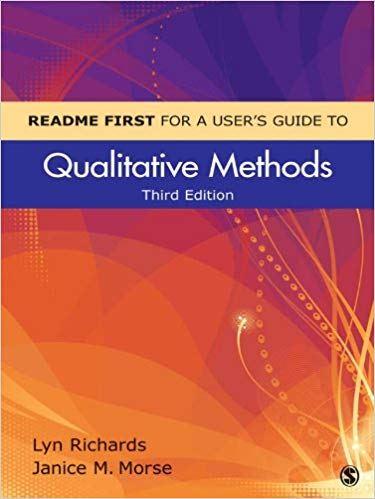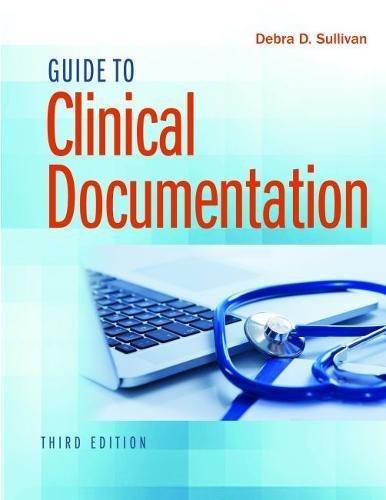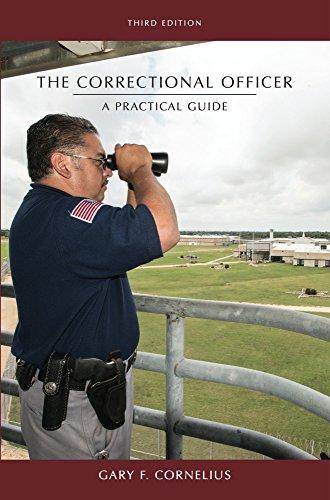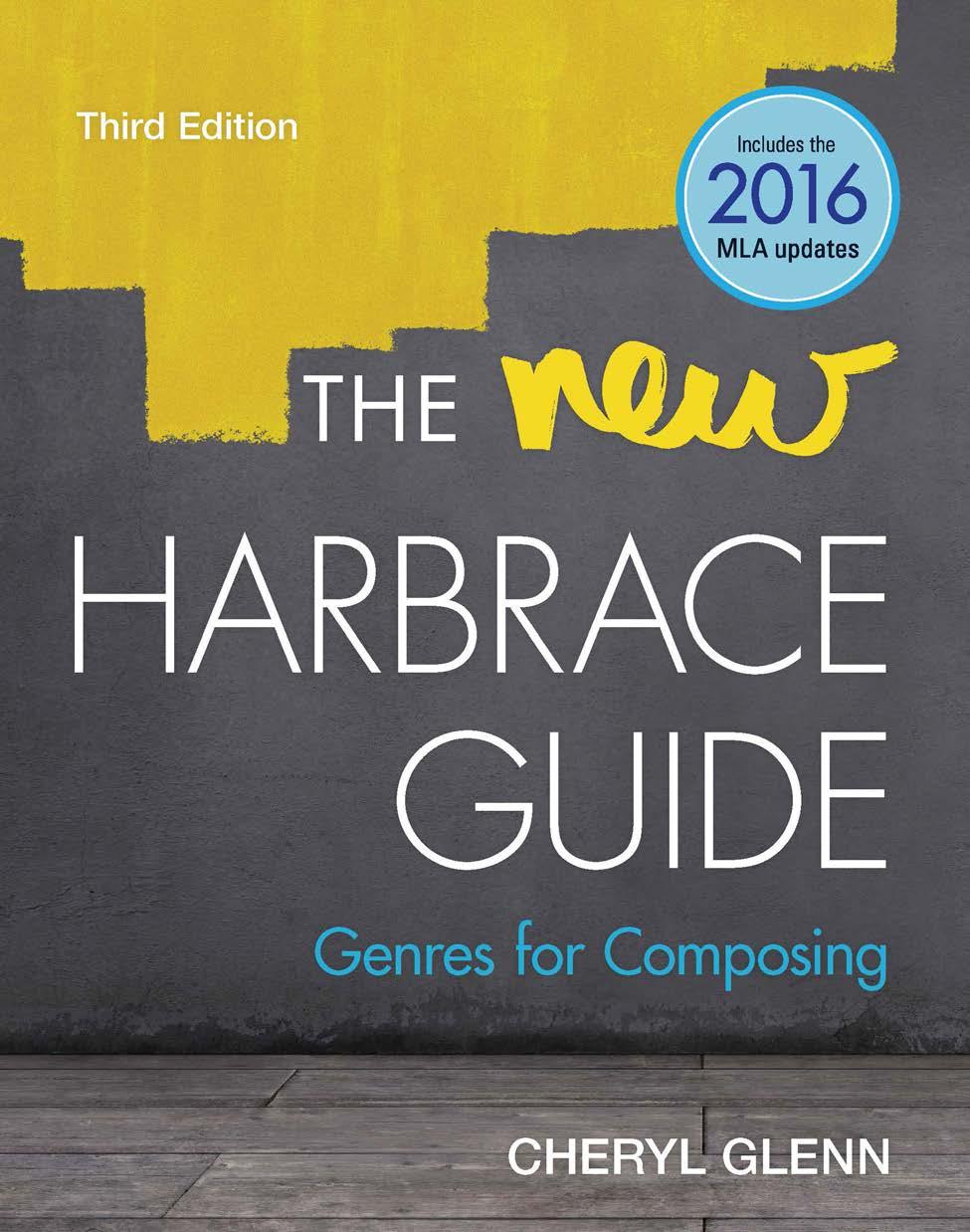(Original PDF) The New Harbrace Guide: Genres for Composing 3rd Edition
Visit to download the full and correct content document: https://ebookmass.com/product/original-pdf-the-new-harbrace-guide-genres-for-comp osing-3rd-edition/
More products digital (pdf, epub, mobi) instant download maybe you interests ...
The New Harbrace Guide: Genres for Composing Cheryl Glenn
https://ebookmass.com/product/the-new-harbrace-guide-genres-forcomposing-cheryl-glenn/
(eTextbook PDF) for DK Guide to Public Speaking 3rd Edition
https://ebookmass.com/product/etextbook-pdf-for-dk-guide-topublic-speaking-3rd-edition/
(eTextbook PDF) for Teacher’s Pocket Guide to School Law, A 3rd Edition
https://ebookmass.com/product/etextbook-pdf-for-teachers-pocketguide-to-school-law-a-3rd-edition/
The New Public Health 3rd Edition
https://ebookmass.com/product/the-new-public-health-3rd-edition/
The Business Guide to Sustainability: Practical Strategies and Tools for Organizations 3rd Edition, (Ebook PDF)
https://ebookmass.com/product/the-business-guide-tosustainability-practical-strategies-and-tools-fororganizations-3rd-edition-ebook-pdf/
Stagecraft Fundamentals: A Guide and Reference for Theatrical Production 3rd Edition, (Ebook PDF)
https://ebookmass.com/product/stagecraft-fundamentals-a-guideand-reference-for-theatrical-production-3rd-edition-ebook-pdf/
(eBook PDF) README FIRST for a User’s Guide to Qualitative Methods 3rd Edition
https://ebookmass.com/product/ebook-pdf-readme-first-for-a-usersguide-to-qualitative-methods-3rd-edition/
Guide to Clinical Documentation 3rd Edition, (Ebook PDF)
https://ebookmass.com/product/guide-to-clinicaldocumentation-3rd-edition-ebook-pdf/
The Correctional Officer: A Practical Guide, Third Edition 3rd Edition, (Ebook PDF)
https://ebookmass.com/product/the-correctional-officer-apractical-guide-third-edition-3rd-edition-ebook-pdf/
Additional readings online.
Key Features of a Position Argument 137
AliCiA WilliAms “The Ethos of American Sign Language” 138
Using Synthesis and Analysis 142
Responding to the Rhetorical Situation 145
Understanding the Rhetorical Situation 145
WriTinG A PersuAsive PosiTion ArGumenT : A Guide 149
Revision and Peer Review 152
ADDITIONAL ASSIGNMENTS 153
GRAMMAR IN C NTEXT Thinking Rhetorically about Coherence—Word Choice, Repetition, and Sentence
Structure 154
Proposals
156
GENRE IN F CUS The Public Service Announcement 157
ASSIGNMENT 158
Reading Rhetorically 158
Key Features of a Proposal 159
simon AriAs “Raise Pennsylvania’s Minimum Wage: Everyone Benefits When All Workers Make a Decent Living” 160
Using Synthesis and Analysis 162
Responding to the Rhetorical Situation 162
Additional readings online.
Understanding the Rhetorical Situation 163
WriTinG A PersuAsive ProPosAl: A Guide 166
Revision and Peer Review 169
ADDITIONAL ASSIGNMENTS 170
GRAMMAR IN C NTEXT Thinking Rhetorically about Linking Ideas 172
Evaluations
174
GENRE IN F CUS The Film Review 175
ASSIGNMENT 177
Reading Rhetorically 177
Key Features of an Evaluation 178
Additional readings online.
Additional readings online.
viii Contents
Alexis WAlker “Donuts at Easton’s Center Circle: Slam Dunk or Cycle of Deterioration?” 179
Using Analysis and Synthesis 182
Responding to the Rhetorical Situation 182
Understanding the Rhetorical Situation 183
WriTinG A PersuAsive evAluATion: A Guide 187
Revision and Peer Review 190
ADDITIONAL ASSIGNMENTS 191
GRAMMAR IN C NTEXT Thinking Rhetorically about Adjectives and Adverbs 192
Critical Analyses
194
GENRE IN F CUS Cultural Analysis 195
ASSIGNMENT 197
Reading Rhetorically 198
Key Features of a Critical Analysis 198
AnnA seiTZ “The Real-Time Consequences of an Online Degree” 199
Using Synthesis and Analysis 201
Responding to the Rhetorical Situation 202
Understanding the Rhetorical Situation 203
WriTinG A PersuAsive CriTiCAl AnAlysis: A Guide 207
Revision and Peer Review 210
ADDITIONAL ASSIGNMENTS 211
GRAMMAR IN C NTEXT Thinking Rhetorically about Precise Language 212
Literary Analyses
215
GENRE IN F CUS The Poetry Slam 216
ASSIGNMENT 218
Reading Rhetorically 218
Key Features of a Literary Analysis 220 mAriAnne moore “Poetry” 221 rAlPh rees “The Reality of Imagination in the Poetry of Marianne Moore” 222
Using Synthesis and Analysis 226
Additional readings online.
Responding to the Rhetorical Situation 226
Understanding the Rhetorical Situation 227
WriTinG A PersuAsive liTerAry AnAlysis:
A Guide 231
Revision and Peer Review 234
ADDITIONAL ASSIGNMENTS 235
GRAMMAR IN C NTEXT Thinking Rhetorically about Ellipses Points in Quotations 235
Part thrEE Processes and strategies for Composing 238
From Tentative Idea to Finished
Project 238
Planning a Response 238
Exploration 239
Organization 244
Crafting a Working Thesis Statement 246
Drafting a Response 247
Revising a Response 250
Peer Evaluation 250
Editing and Proofreading a Response 253
Designing the Final Draft 253
©
Rhetorical Methods of Development
262
Narration 262
Description 264
Exemplification 265
Definition 266
Classification and Division 268
Comparison and Contrast 268
Cause-and-Effect Analysis 270
Process Analysis 272
Argument 275
Part FOUr A Guide to research 279
Thinking Rhetorically about Research
279
Considering the Rhetorical Situation 280
Identifying the Research Question 282
Locating an Audience 284
Establishing Your Purpose 287
Using a Research Log 289
Identifying Sources
Sources for Research 293
Books 294
Periodicals 297
Online Sources 300
Audiovisual Sources 302
292
Additional Advice for Finding Sources Online 303
Fieldwork 304
Observation 304
Interviews 305
Gillian Petrie, Interview of Jan Frese 306
Questionnaires 307
Additional Advice on Field Research 308
Preparing a Working Bibliography 309
Contents
Evaluating Sources
311
Responding to Your Sources 312
Reading with Your Audience and Purpose in Mind 313
Using a Research Log to Evaluate Sources 314
Responding to Your Notes 314
Questioning Sources 316
Currency 316
Coverage 317
Reliability 317
Soundness of Reasoning 319
Stance of the Author 319
Preparing an Annotated Bibliography 320
Synthesizing Sources: Summary, Paraphrase, and Quotation
322
Avoiding Plagiarism 322
Which Sources to Cite 323
Common Citation Errors 324
Summarizing Sources 324
Using Function Statements 325 WilliAm luTZ “Doubts about Doublespeak” 325
Clustering and Ordering Information in a Summary 329
Sample Student Summary 330
Partial Summaries 332
Paraphrasing Sources 333
Quoting Sources 335
Using Attributive Tags with Direct Quotations 335 Including Question Marks or Exclamation Points 336
Quoting Memorable Words or Phrases 336
Modifying Quotations with Square Brackets or Ellipsis Points 336
Using Block Quotations 337
Acknowledging Sources in MLA Style 338
MLA Guidelines for In-Text Citations 338
MLA Guidelines for Documenting Works Cited 342
Books 347
Articles 352
Online Sources 355
Other Sources 359
Sample MLA Research Paper 363
Acknowledging Sources in APA Style
376
APA Guidelines for In-Text Citations 376
APA Guidelines for Documenting References 380
Books 382
Articles in Print 386
Sources Produced for Access by Computer 390
Other Sources 392
Sample APA Research Paper 394
Part FivE real situations for real Writing: A Thematic reader 403
Food and the (Cultural) Experience of Taste
403
mArGAreT meAd “The Changing Significance of Food [Overnourished and Undernourished in America]” 405
miChAel PollAn “Out of the Kitchen, Onto the Couch [ The Collapse of Home Cooking]” 407
kAren hernAndeZ “Why We Should Ditch the Slow Food Movement [A Response to Michael Pollan]” 408
CorBy kummer “Good-bye Cryovac [Local Foods, College Food Service, and Scraping Your Own Plate]” 411
AlBerTo minGArdi “Embrace the Food Tech That Makes Us Healthier––“Locavores” and Other Sustainability Advocates Oppose the Innovations That Extend and Improve Life” 413
COMMUNITY C NNECTIONS 415
The Millennial Generation
joel sTein “Millennials: The Me Me Me Generation” 418
joel lAndAu “VIDEO: Filmmaker Apologizes on Behalf of Entire Millennial Generation: ‘We Suck and We’re Sorry’” 419
PeW reseArCh CenTer “Most Millennials Resist the ‘Millennial’ Label” 421
dAvid fAllArme “A Look at How Gen Y Communicates” 427
Tom mCBride, ron nief, And ChArles WesTerBerG
“Beloit Mindset List 2019” 429
COMMUNITY C NNECTIONS 431
Taking Up (Public) Space
432
Pierre ChrisTin And olivier BAleZ “Robert Moses: The Master Builder of the City” 434
AnThony flinT “Who Really Owns Public Spaces?” 436
ABBy PhilliP “Oklahoma’s Ten Commandments Statue Must Be Removed, State Supreme Court Says” 440 emily BAdGer “How Smart Phones Are Turning Our Public Places into Private Ones” 442
jAmie uTT “From Manspreading to Mansplaining—6 Ways Men Dominate the Spaces Around Them” 444
COMMUNITY C NNECTIONS 448
Whose Lives Matter?
449
Todd s. Purdum “Whose Lives Matter?” 451
roxAne GAy “A Tale of Two Profiles” 454
mAlColm-Aime musoni “Being an 18-Year-Old Black Man a Year after Mike Brown” 458
CArimAh ToWnes “Obama Explains the Problem with ‘All Lives Matter’” 461
WilliAm j. Wilson “The Other Side of Black Lives Matter” 462
COMMUNITY C NNECTIONS 464
STEM vs. STEAM
465
melissA dAvey “Neil deGrasse Tyson Calls Scientific Illiteracy a Tragedy of Our Times” 467
TerenCe monmAney “How Much Do Americans Know about Science?” 469
Anne jolly “STEM vs. STEAM: Do the Arts Belong?” 475
norA CAPlAn-BriCker “New Evidence: There Is No ScienceEducation Crisis” 478
mArGueriTe del GiudiCe “Why It’s Crucial to Get More Women into Science” 482
COMMUNITY C NNECTIONS 493
Part Six A rhetorical Guide to Grammar and sentence style
Word Classes and Rhetorical Effects
Sentence Structure and Rhetorical Effects
Editing for Clarity and Style
Punctuation, Mechanics, and Rhetorical Effects
Credits 495
Glossary of Rhetorical Terms 499
Glossary of Usage 505
Index 517
Contents
Preface
Composing in a Digital Age
“Digital Natives.” That’s the term frequently used to refer to your generation of college students, you who have always read and written—communicated— using digital media. Accompanying the technological developments that have led to ubiquitous cell phones, satellite television, and the Internet are developments in the ways in which people actually create and circulate information. With the growing accessibility of the Internet, increasing numbers of people communicate their ideas and information about their lives through blogs, Facebook, Twitter, podcasts, Reddit, and YouTube. Somehow, the urry of their online activities enhances their in uence compared to that of people with little or no access to technologies such as computers, Internet connections, and digital and audio production equipment.
Given the demands and expectations of your digital generation, The New Harbrace Guide: Genres for Composing, Third Edition, helps by guiding your composing in today’s college, workplace, and community environments. The New Harbrace Guide will introduce you to or expand your knowledge of online courses, web content, podcasts, video links, course-management systems, PowerPoint presentations, and other kinds of electronic aids. Composing with all these various media (multimedia composing) is here to stay. For example, The New Harbrace Guide will help you understand the principles behind collaborating effectively with community-service agencies or businesses in order to ful ll their expectations for research and writing; it will also help you conduct scholarly collaborative projects via social-networking sites and compose in any one of a variety of other, largely digital or multimodal situations. Understanding these principles and practices will help you productively employ rhetoric—the strategy of communicating persuasively—as you address and resolve problems, whether those problems are social, academic, or work-related.
Key Features
The New Harbrace Guide distinguishes itself from other writing guides on the market by its sustained focus on a rhetorical situation, one that establishes an opportunity for using language to make change. Guidance on speci c rhetorical
techniques is provided to help you shape your ideas into language that is best suited for your audience and purpose, as well as most appropriate for the media that are now routine for composing different kinds of writing. Thus this guide to composing is theoretically sophisticated yet easily practical: you will come to see the ways that using language purposefully (whether you’re writing or speaking) is an integral part of your daily life, in and out of school. In addition, this comprehensive and richly exible writing guide includes a rhetoric, a research manual, and a reader. Its key features include
• A Rhetorical Approach. By emphasizing rhetorical techniques that will help you understand how to evaluate a rhetorical situation, identify and respond to an opportunity for change, and address a problem rhetorically, this introduction to rhetoric teaches principles that have empowered readers, speakers, and writers for millennia––techniques that are transferable to your other writing tasks, whether in school, the workplace, or the community. Part 1 introduces you to the rhetorical principles that underlie all writing situations and provides you with a basic method for using those principles in the digital, print, and multimodal spheres of composing.
• A Guide to Genres and Persuasion. The principles outlined in Part 1 are also reinforced for each genre (memoir, pro le, investigative report, position argument, proposal, evaluation, critical analysis), with a featured Writing Guide for composing persuasively. By following a demysti ed step-by-step process, each Writing Guide breaks down composing into manageable tasks that build toward a larger writing project. These Writing Guides for each genre use simple, direct, and incremental advice to help you create forceful, persuasive compositions.
• Integ rated Multimodal/Multimedia Coverage. Your writing today needs to take into consideration the most effective medium (print, digital, verbal, visual, multimodal) for delivering your message. The New Harbrace Guide supports effective twenty- rst-century composing practices in Part 1 with a chapter on rhetorical success in a digital age that builds on the rhetorical knowledge of media you bring to the classroom––from text messages to Facebook pro les to Internet searches and more––with multimodal examples and guidance for each genre to help you choose when and how to use digital, verbal, visual, and print media for various audiences, purposes, and situations. Identifying an Opportunity for Change, Writing in Three Media, and Additional Assignments: Knowledge Transfer present a number of multimodal possibilities for each genre.
In short, then, The New Harbrace Guide guides you through various composition processes and genres that will enhance your education as well as your success in the workplace and your community.
Prefa Ce
How Does the Book Work?
In this new streamlined edition, you’ll nd many innovations (large and small) that have helped to create a more user-friendly, portable, and easy-to-access guide (both in print and through an online MindTap version).
• Colorful Tabs help you to locate quickly the information you need in the book. Each chapter has a tab, color-coded by the part of the book where the chapter is located. These tabs can be seen at the top of the page and when you ip through the book.
• Color-Coded Wr iting Guidance uses purple for advice on creating effective introductions, green for advice on creating coherent bodies of text for your writing projects, and blue for advice on conclusions. You’ll nd this in the annotated essay example in each chapter in Part 2 and in the corresponding Writing Guides in each chapter.
• Wr iting Guides in each chapter in Part 2 provide step-by-step guidance for creating effective compositions. To locate this information more easily, a new tab runs down the entire page so you can easily locate the Writing Guides in each chapter.
• Marg inal Glossary De nitions for rhetorical terms are placed next to the term for easy reference.
• Marginal Cross-References to other parts of the book are provided where a refresher––or additional information––on particular topics might come in useful.
What Will You Find Online?
MindTap ® English helps you stay engaged with real-world writing assignments and motivated by information that shows where you stand at all times— both individually and compared to the highest performers in class. MindTap® English eliminates the guesswork, focusing on what’s most important to your instructor with a learning path designed speci cally by your instructor and for your English course. Improve your college writing and research skills with built-in tools, such as a professional tutoring service, a database of scholarly sources and interactive videos to support your research papers, a dictionary, and tools to keep you organized and on track.
• Additional Online Readings are available if you would like to explore topics further, see additional examples, or use vetted and trustworthy sources for your research.
• Grammar and Usage Resources appear in an online handbook and a glossary of usage.
What Is a Rhetorical Approach?
The book has been carefully designed with many practical, speci c tips as well as step-by-step guidance so that you can respond strategically and effectively to your writing assignments in your rst-year composition course. That said, The New Harbrace Guide has also been designed to help you develop skills you can transfer to other rhetorical situations, whether you nd yourself writing for another class, for a social or civic setting, or for the workplace.
As you get started with The New Harbrace Guide, you’ll notice that Part 1, Entering the Conversation, introduces you to the rhetorical principles that underlie all writing situations and provides you with a basic method for using those principles. You’ll also notice that many of the examples in Part 1 are by students, to reinforce that none of these skills is beyond your reach as a rstyear student.
• Chapter 1, Understanding the Rhetorical Situation, focuses on understanding writing as an opportunity to create change. This is the most powerful part of answering the age-old question: Why write? Through analyzing strategically your rhetorical context you will understand better when and how your writing can create a change of heart, mind, or action. Analyzing the Rhetorical Situation prompts also occur throughout the book to guide you.
• Chapter 2, Responding to the Rhetorical Situation, focuses on persuasive writing. When you understand how writing can change you and your audience, you will be better able to recognize when purposeful writing delivered in any of its forms is the best, most persuasive response to a rhetorical situation. Examples of persuasive writing in a variety of media help make concrete the principles of persuasion (commonly referred to as ethos, logos, and pathos). These principles are part of the guidance in each of the assignments in this book.
• Chapter 3, The Writer as Reader—new to this edition—provides a foundation for reading both critically and rhetorically and for using the skills of synthesis and analysis that are required in college writing and beyond. This new chapter shows how analyzing what you read rhetorically is helpful both in understanding what you read and in providing an opportunity for writing and for creating those broader thinking skills that are embedded in persuasive writing practices. Rhetorical reading also assists you in conducting research in college and in life on those occasions when you bring sources together that must be weighed, re ected on, explained, and often challenged. Tips for Researching for each genre (Researching a Memoir, Evaluation, Pro le, Position Argument, and so forth) and for Using Synthesis and Analysis are also included in each of the assignments in this book.
• Chapter 4, Rhetorical Success in a Digital World, gets us back to where we started at the beginning of this Preface, the idea that as “digital natives” you are part of a brave, new world of writing. Chapter 4 helps you identify and analyze the rhetorical elements of multimedia compositions and recognize when multimedia is part of a tting response. Today, choosing a medium that effectively reaches the audience you hope to change is part and parcel of being a successful citizen of the world, and this emphasis is re ected in all the assignments included in this book.
Why Focus on Genres and Media?
Examples, examples, examples. We all learn best when the desire to create a change is married to an example of how to do it. A genre is a type of writing with identi able characteristics that have emerged over time. The assignments in Part 2, Writing Projects: Rhetorical Situations for Composing, provide eight writing projects anchored in the uid concept of a genre (such as memoir, position argument, critical analysis, etc.), each chosen because it exercises speci c skills that should be helpful as part of your toolkit for responding to a broad range of writing situations. The strategies you use to create a memoir (storytelling or the use of poignant personal examples) might nd their way into a position argument and vice versa. To say you are writing one genre or another is to identify the primary purpose and social context for your writing and your audience––especially since no single genre limits the rhetorical strategies you can employ in response to a rhetorical opportunity for change. These chapters have been restructured and streamlined, breaking down the writing process into incremental steps that are straightforward and manageable. Each chapter includes
• Identifying an Opportunity for Change at the beginning of the chapter with advice on a consideration of the visual, audio, digital, and print options for each genre.
• Plentiful Examples beginning with a “micro” example of a subtype of the genre (such as a food memoir, a public service announcement, or a lm review) in the new Genre in Focus section and an annotated example––often by a student––in the new sections on Reading Rhetorically. These examples help you identify the Key Characteristics of that genre and provide guidance on Using Synthesis and Analysis. Additional examples can be found in MindTap, the Thematic Reader, and the Writing in Three Media examples in each chapter.
• Step-by-Step Wr iting Support for each of these eight chapters provides tips for research in that genre, helps you develop a topic, and guides you in
Prefa Ce xix
identifying your rhetorical audience and purpose. The Writing Guide breaks down into manageable tasks speci c guidance on writing persuasively and walks you through writing a strong introduction, a well-supported body, and a meaningful conclusion.
• Revision and Editing Suppor t takes you from your rst draft to what will become your nal paper or media project. Each Writing Guide includes guidance for revision, your own as well as your peers’. You may nd yourself required to evaluate the writing of a fellow student (“peer”), or you might want your peers to advise you on your own work. To that end, you will nd a section titled Revision and Peer Review. You will also nd a Grammar in Context feature to help you and your peers revise and edit your drafts. A full handbook and glossary of usage are available through MindTap.
• Knowledge-Transfer Assignments will also help you recognize the speci c ways your academic assignments prepare you for composing in other contexts (work and community) as well as in different print, visual, audio, and digital media.
Finding Your Writing Process
Your writing process is as individual as you are. You may be a writer who especially likes composing the rst draft—by hand or keyboard. Maybe you enjoy the tactile sensation of writing with a gel pen on a yellow legal pad or the friction of moving a felt-tipped pen across pulpy paper. Maybe you draft at your computer, entertaining yourself by connecting particular fonts with particular ideas in your draft.
Or maybe you’re one of those writers who is relieved when she nishes a draft so that she can use her energy to work with and against that draft. You may like to print out your piece, sit back in a comfortable chair, and read it line by line, penciling in new sentences, crossing out entire sections, ddling with your word choice, and drawing arrows to reorganize your paragraphs. However you write and revise, you’ll want to nd a way to enjoy polishing your writing until you’re proud to submit it. As internationally known writer Susan Sontag put it:
You write in order to read what you’ve written and see if it’s OK and, since of course it never is, to rewrite it—once, twice, as many times as it takes to get it to be something you can bear to reread.
—Susan Sontag, “Directions: Write, Read, Rewrite. Repeat Steps 2 and 3 as Needed.”
For writers like Sontag, the enjoyment they get from rereading their revised work is the best part, whether or not they send it on to someone else to read.
Whatever your process, Part 3, Processes and Strategies for Composing, provides a number of tips that could save you time and strengthen your writing practice. Chapter 13, From Tentative Idea to Finished Project, includes examples for getting started if you’ve hit a writing block as well as for writing a thesis statement, creating a structure for your writing, drafting, revising, and editing. In Chapter 14, Rhetorical Methods of Development, you’ll nd examples of additional strategies for developing skills in narrative, description, de nition, exempli cation, comparison-contrast, classi cation and division, process analysis, cause-and-effect analysis, and argument. You’ll also nd these methods cross-referenced in the margins of the text when one of these rhetorical strategies is particularly useful for a particular assignment in Part 2. Taken together, these two chapters provide additional support for successful composing to be used as needed as you develop your writing process.
A Value Proposition
Of course, textbooks are expensive. What is the “value proposition” that makes The New Harbrace Guide worth it? In addition to the speci c writing advice, The New Harbrace Guide includes a Guide to Research, a Thematic Reader, and unparalleled digital support in MindTap. The added value of MindTap includes the text itself online—with enhanced media support for your learning and writing—as well as additional online readings and an online handbook. For research, you’ll nd EasyBib and Questia in MindTap––premier tools for researching sources and formatting your research papers.
Part 4, A Guide to Research, presents research as an effective way of responding to certain rhetorical opportunities, rather than as a set of rules and requirements. Guidance is provided on developing a research question, and because different research questions require different research methods, The New Harbrace Guide includes coverage of library, online, and eld research. In addition, you’ll find help reading sources critically as well as summarizing, paraphrasing, and quoting sources. The New Harbrace Guide also includes two separate chapters––with sample papers––on formatting papers in styles for MLA (Modern Language Association) according to the eighth edition of the MLA Handbook (2016) and APA (American Psychology Association). Research can be daunting, so The New Harbrace Guide continues to focus on the ways students experience the research process by including Tricks of the Trade tips from fellow students throughout these chapters.
Part 5, A Thematic Reader, includes readings and themes, contemporary and thought-provoking clusters, that will appeal to your interest in analyzing
Prefa Ce xxi
yourself and the world around you. We have returned to popular themes such as Food and the (Cultural) Experience of Taste (Chapter 21), The Millennial Generation (Chapter 22), and Taking Up (Public) Space (Chapter 23), while introducing new ones that reviewers have embraced, addressing issues such as race in Whose Lives Matter? (Chapter 24) and science in STEM vs. STEAM (Chapter 25). The readings can be used as additional examples for each genre or as topics for your research. Assignments are included so that you can use these readings as the basis for writing in a particular genre or to connect writing to making a change in your community. More readings on each topic are available online on MindTap.
What Does This Mean for You?
So far, I’ve been telling you about all the ways that this Guide will support your academic writing, the kind of writing that too often intimidates new college students. But you shouldn’t feel intimidated; after all, you’ve been writing almost all your life. When you were a small child, you grabbed crayons, felt-tip markers, or chalk and wrote on whatever surfaces you could nd: paper, coloring books, sidewalks, chalk boards, table tops, walls, lampshades. As you think back on your earliest memories of composing, keep in mind the process of composing that you practiced then. You gathered up your materials and set to work. The entire process—from start to nish—was simple, often fun. Like the human animal you are, you were marking your territory—leaving messages for the people who entered your world. Award-winning author Joyce Carol Oates cannot recall a time when she wasn’t writing:
Before I could write what might be called human words in the English language, I eagerly emulated grown-ups’ handwriting in pencil scribbles. My rst “novels” . . . were tablets of inspired scribbles illustrated by line drawings of chickens, horses and upright cats.
—Joyce Carol Oates, “To Invigorate Literary Mind, Start Moving Literary Feet”
Like the writing you did as a child, let college composing be satisfying, even when it isn’t always fun, let alone easy. The process might at times seem demanding, but the results are often exhilarating, something you’re proud of. If that weren’t the case, you wouldn’t worry about writing well or care what your teacher thought of your writing. Perhaps the best way to make composing a pleasurable activity is to build on what you already do well and enjoy as you write. Use this book as your guide as you ful ll your assignments for this class––it is designed to do that––but also use the book
to discover the skills you already have and use them as you prepare to write outside of class.
For writers like you, the enjoyment you get from writing may be learning to develop your thinking into clear words and images, submitting your essays to instructors who respond with proof that they’ve actually read your words, or transforming your ideas into a multimedia message for your friends. Writing doesn’t require any one speci c satisfaction but often calls up many overlapping ones. Here’s hoping that your college writing launches your thinking, creativity, and intellectual curiosity as you write your way through college and on into the workplace and community.
For Instructors: A Note about Online Course Materials
MindTap® English for Glenn’s The New Harbrace Guide: Genres for Composing, Third Edition, engages your students to become better thinkers, communicators, and writers by blending your course materials with content that supports every feature of the writing process.
• Interactive activities on grammar and mechanics promote application to student writing.
• An easy-to-use paper management system helps prevent plagiarism and allows for electronic submission, grading, and peer review.
• A vast database of scholarly sources with video tutorials and examples supports every step of the research process.
• Professional tutoring guides students from rough drafts to polished writing.
• Visual analytics track student progress and engagement.
• Seamless integration into your campus learning management system keeps all your course materials in one place.
MindTap lets you compose your course, your way.
The Instructor’s Manual for Glenn’s The New Harbrace Guide: Genres for Composing, Third Edition, includes detailed sample syllabi and chapter-by-chapter suggestions for using the guide in your classroom. The detailed syllabi comprise three annotated course plans that can be followed or consulted when teaching with this text in programs that focus on academic writing, writing in the disciplines, or service learning. Activities, exercises, and journal-writing prompts are provided for each class meeting, along with suggested goals and materials for instructors to review.
Acknowledgments
All books demand time, talent, and plenty of hard work. For that reason, I could not have produced this textbook without the help and support of a number of colleagues, friends, and students. I found myself calling on their expertise at various times throughout the creation of this book. Sarah Adams provided me examples of successful student essays, for which I’m grateful. She also contributed a paper that can be found on MindTap, along with papers from fellow students Cole Harding, Ryan Insley, Bailey Young, Marianna Williamson, Greg Coles, and Emily Grandinette. In addition to the paper on MindTap, Greg Coles gave generously of his time and wisdom as a teacher, scholar, and writer. He helped me conduct research into multimedia sources and locate new readings as well as contributors for various parts of the book, and provided an essay he wrote as a rst-year student for the MLA chapter. Mohammed Samy allowed us to reprint an infographic on how a genre comes to be (which he had originally composed for Professor Pavel Zemliansky’s composition course at the University of Central Florida). Undergraduate intern Marianna Williamson helped with various research and proofreading duties, all demonstrating a professionalism beyond her years. I remain grateful to them all, as well as to those whose work as students comes to us from previous editions: Caledonia Adams, Grace Randolph, and the Viz-a-GoGo web creators from Texas A&M University, whose work appears in Part 1; Anna Seitz, Alicia Williams, and Alexis Walker, who contributed papers to Part 2; Anastasia Simkanin, who allowed us to see her process as well as her paper in Part 3; and for Part 4, Cristian Nuñez and Keith Evans, for tips in “Tricks of the Trade,” Jacob Thomas, for his summary of “DoubleSpeak,” and Catherine L. Davis, whose paper appears in the APA chapter. I know of several students whose essays are featured in the Thematic Reader for this book, too: David Fallarme, Karen Hernandez, and Malcolm Aime-Musoni. Likely there are others I’ve missed, but suf ce it to say this book would not have been possible without the contribution of students to the book and to my teaching and learning.
At Cengage, Senior Content Developer Leslie Taggart oversaw the progress of the project, relying (as we all have) on the good sense and keen insights of Product Director Monica Eckman, Content Project Manager Rebecca Donahue, and English Product Manager Laura Ross. New to our team in this edition, Kina Lara has already demonstrated her marketing prowess. Editorial assistant Claire Branman helped launch the substantive improvements to this edition. For their painstaking production of this book, I thank Rosemary Win eld, who, upon retiring, handed it off to Corinna Dibble and Rebecca Donahue, Cengage production editors; Angela Williams Urquhart and Kathy Smith, Editorial Director and copy editor at Thistle Hill Publishing Services; Ann Hoffman, tireless intellectual property analyst; Erika Mugavin, tireless
intellectual property project manager; and Marissa Falco, this new book’s designer. But my biggest thanks goes to my new editor extraordinaire, Lisa Colleen Moore, whose intellect and publishing sense have far exceeded my greatest expectations. For many months now, she’s been my constant intellectual companion and my out-of-this-world partner in developing this new guide.
Finally, I have learned from a phenomenal group of reviewers, including the following instructors who offered their guidance on the second edition:
Jared Abraham, Weatherford College
Jeff Andelora, Mesa Community College
Amy Azul, Chaffey College
Andrea Bewick, Napa Valley College
Lee Brewer-Jones, Georgia Perimeter College
Sue Briggs, Salt Lake Community College
Mark Browning, Johnson County Community College
Mary Burkhart, University of Scranton
Mary Carden, Edinboro University of Pennsylvania
Jo Cavins, North Dakota State University
Ron Christiansen, Salt Lake Community College
Stephanie Dowdle, Salt Lake Community College
Rosalyn Eves, Southern Utah University
Eugene Flinn, New Jersey City University
Patricia Flinn, New Jersey City University
Rebecca Fournier, Triton College
Powell Franklin, Jackson State Community College
James Green, Northern Kentucky University
Kevin Grif th, Capital University
Anna Harrington, Jackson State Community College
Martha Holder, Wytheville Community College
Dawn Hubbell-Staeble, Bowling Green State University
James Mayo, Jackson State Community College
Kate Mohler, Mesa Community College
Sheryl Mylan, College of DuPage
Randy Nelson, Davidson College
Dana Nkana, Illinois Central College
Eden Pearson, Des Moines Area Community College
Jason Pickavance, Salt Lake Community College
Jeff Pruchnic, Wayne State University
Amy Ratto Parks, University of Montana
Marsha Rutter, Southwestern College
Adrianne Schott, Weatherford College
Wendy Sharer, East Carolina University
Noel Sloboda, Pennsylvania State University–York
David Swain, Southern New Hampshire University
Sharon Tash, Saddleback College
Michael Trovato, Ohio State University –Newark
Cynthia VanSickle, McHenry County College
And for this third edition, I’m grateful for the thoughtfulness of the comments by so many who reviewed this book. Their good suggestions helped make this book better, especially when hard decisions needed to be made about how to shorten the book while retaining and enhancing the most useful content.
Emory Abbott, Georgia Perimeter College
Camila Alvarez, Indian River State College
Krysten Anderson, Roane State Community College
Joe Antinarella, Tidewater Community College
Rebecca Babcock, University of Texas of the Permian Basin
Edith Baker, Bradley University
Jessica Bannon, University of Indianapolis
Craig Bartholomaus, Metropolitan Community College
Crystal Bickford, Southern New Hampshire University
Melinda Borchers, University of Tennessee
Anthony Cavaluzzi, SUNY Adirondack
Christie Diep, Cypress College
Amber Dinquel, Richmond Community College
Michael Doolin, Monroe Community College
Margaret Dwyer, Milwaukee School of Engineering
Jeremiah Dyehouse, University of Rhode Island
Karen Engels, Waukesha County Technical College
Tyler Farrell, Marquette University
Audrey Forrest-Carter, Winston-Salem State University
Kelley Fuemmeler, Missouri Valley College
Lynee Gaillet, Georgia State University
Barbara Goldstein, Hillsborough Community College
Jason Graves, Kilgore College
Kevin Grif th, Capital University
Kim Haimes-Korn, Kennesaw State University
Ismail Hakim, Richard J. Daley College
Stephen Hancock, Brigham Young University –Hawaii
Beth Heim de Bera, Rochester Community and Technical College
Jeffrey Hornburg, Keiser University
Geraldine Jacobs, Jackson College
Joanne Jacobs, Shenandoah University
xxvi Prefa Ce
Cecilia Kennedy, Clark State Community College
Debra Knutson, Shawnee State University
Laura La Flair, Belmont Abbey College
Dawn Lattin, Idaho State University
Nancy Lee-Jones, Endicott College
Lindsay Lewan, Arapahoe Community College
Carol Lewis, Three Rivers College
Anna Maheshwari, Schoolcraft College
Bonnie Markowski, University of Scranton
Michael Martin, Stephen F. Austin State University
Michael McClure, Virginia State University
Nancy McGee, Macomb Community College
James McKeown, McLennan Community College
Trista Merrill, Finger Lakes Community College
Deborah Miller-Zournas, Stark State College
Dr. Jan Modisette, Jacksonville College
David Norman, Savannah Technical College
Lara Nosser, Richmond Community College
Lonetta Oliver, St. Louis Community College
James Ortego, Troy University
Jarrod Patterson, Alabama A&M University
Jerry Petersen, Utah Valley University
John Pleimann, Jefferson College
Dan Portincaso, Waubonsee Community College
Brad Prestwood, Caldwell Community College and Technical Institute
Amy Ratto Parks, University of Montana
Laura Rotunno, Penn State Altoona
Debra Ryals, Pensacola State College
Jamie Sadler, Richmond Community College
Beth Sherman, San Diego State University
Dr. Brenda Tuberville, Rogers State University
Matthew Turner, Lone Star College-CyFair
Janice Walker, Georgia Southern University
Jeana West, Murray State College
Katy Whittingham, Bridgewater State University
Mary Williams, Midland College
Nancy Young, Curry College
Janet Zepernick, Pittsburg State University
Cheryl Glenn
June 2016
